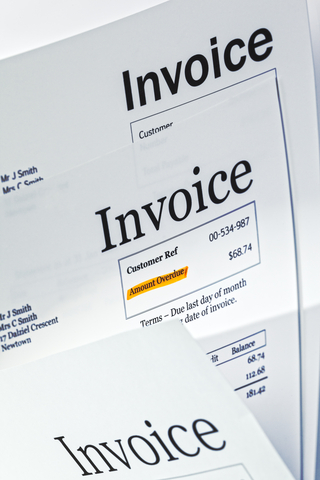 Unless you get paid at the point of sale (POS), you have to bill for your goods or services and wait for payment. It’s my belief that sound invoicing policies result in receiving payments faster, although I don’t have any statistics to back this up. In fact, it’s hard to find any relevant and recent statistics on invoicing in general.
Unless you get paid at the point of sale (POS), you have to bill for your goods or services and wait for payment. It’s my belief that sound invoicing policies result in receiving payments faster, although I don’t have any statistics to back this up. In fact, it’s hard to find any relevant and recent statistics on invoicing in general.
Here’s what I found and what I suggest for improving your chances of being paid in full and on time.
Statistics on waiting for payment
The NFIB conducted a poll in 2001 and had these interesting responses:
- 37% of small businesses get paid at the time of sale, delivery, or job completion. This means that nearly two thirds must invoice for payment.
- 53% request payment in “net 30 days” while 17% say “due on receipt.”
- 29 days is the average time it takes for customers to pay up; 11% pay up in 46 days.
D&B reported that in 2012 about half of companies pay on time, but 6.3% of U.S. companies had late payments of over 90 days. The report was not limited to small businesses and covered only B2B invoicing. The report also broke down payment practices by business size (micro, small, medium, and large) and industry (e.g., construction, retail, services).
A Dynavistics infographic shows that 26% of invoices 3 months old are uncollectible, 70% of invoices 6 months old are uncollectible, and the rate rises to 90% for invoices at least 9 months old.
One statistic that has stuck in my mind for years is that as many as 2% of customers have no intention of ever paying the bill (How to Collect Debts and Still Keep Your Customers, AMACOM, 1999). So invoicing may be a lost cause for a small percentage of sales (I’ve been stiffed only twice … once from a customer who simply refused to pay despite having no complaints about the services and another customer that went bankrupt before paying my invoice.)
So you know the facts. What can you do to make sure you’re paid what you’re owed (if you can’t get paid at POS)?
Invoice promptly
Good business practices suggest that you create and send invoices as close to the sale as possible. This can now be done on the fly using apps or cloud-based solutions tied to accounting programs. For example, FreshBooks lets you create invoices in minutes, including automatic calculation of sales tax if applicable. You can do this at a customer/client location through the cloud, which may enable you to collect payment on the spot.
- Don’t wait until the end of the month to send out all invoices for work completed during this period.
- Don’t send invoices by snail mail (which delays the customer’s receipt and has the possibility of nondelivery); send invoices electronically.
For service jobs, arrange for payment upon completion of a phase of the work so you’re not waiting for a single payment at the end of a project. Establish pay points (e.g., completion of a certain task, a portion per month).
Conclusion
Whether or not customers/clients paid by check, credit card, PayPal, or other electronic transfer, you may need to supply an invoice. Make sure your invoicing capacity is swift, professional looking, and complete. While this may not guarantee payment, it certainly helps. Collection practices, dropping slow-paying customers, and charging interest are topics for another time.


